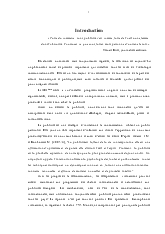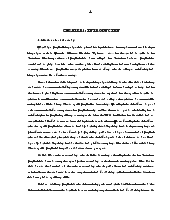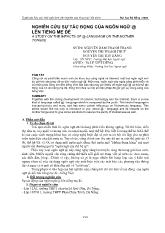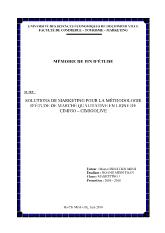A cross-Cultural study on making a bargain in english and vietnamese
- Người chia sẻ : vtlong
- Số trang : 42 trang
- Lượt xem : 8
- Lượt tải : 500
Các file đính kèm theo tài liệu này
 luanvan%20nop.doc
luanvan%20nop.doc
- Tất cả luận văn được sưu tầm từ nhiều nguồn, chúng tôi không chịu trách nhiệm bản quyền nếu bạn sử dụng vào mục đích thương mại
Bạn đang xem trước 20 trang tài liệu A cross-Cultural study on making a bargain in english and vietnamese, để xem tài liệu hoàn chỉnh bạn click vào nút DOWNLOAD LUẬN VĂN ở trên
Any creatures on this earth, when forming a community, share their same language to survive and to develop. Each type of animal has its own so-called language so that they can recognize its specie. Language of bird is the sound of singing, of dog is the sound of barking, of ocean animals such as dolphin, seal is the sound of lapping. Human being, the supreme animal, by each ethnic group, territory has its own language of sounds, signs or symbols to communicate, to support each other. It is also noted that language is the basic tool by which humans make society function. In its most basic form, language is a tool humans have utilized, sometimes effectively, sometimes not so effectively, to communicate their ideas, thoughts, and feelings to others. Saville-Troike (in Samovar, L.A and Porter, R.E, 1991: 166) furthers this notion by saying:
“At the level of individuals and groups interacting with one another, the functions of communication are related to participants’ purposes and needs. These include such categories of functions as affect (conveying feelings or emotions), directive (requesting or demanding), poetic (aesthetic), phatic (empathy and solidarity), and metalinguistic (reference to language itself).”
Language also permits you to pool knowledge and to communicate with others who are beyond the reach of your voice in space and time so that you need not rediscover what others have already discarded. This capability is a key in making progress possible because it allows us to learn from the past, and to communicate through time.
Language serves a number of cultural, communal, and societal functions. First, from the cultural perspective, it is the primary means of preserving culture and is the medium of transmitting culture to new generation. In Vietnamese families, parents talk with their children to teach them the traditional family values such as the respect, the patriotism, the virtue of worshipping their ancestors. In America, children learn the values of individualism and freedom as the Americans’ identity from generation to generation. Second, it helps establish and preserve community by linking individuals into communities of shared identity. Third, at the societal level, it is important to all aspects of human interaction.




